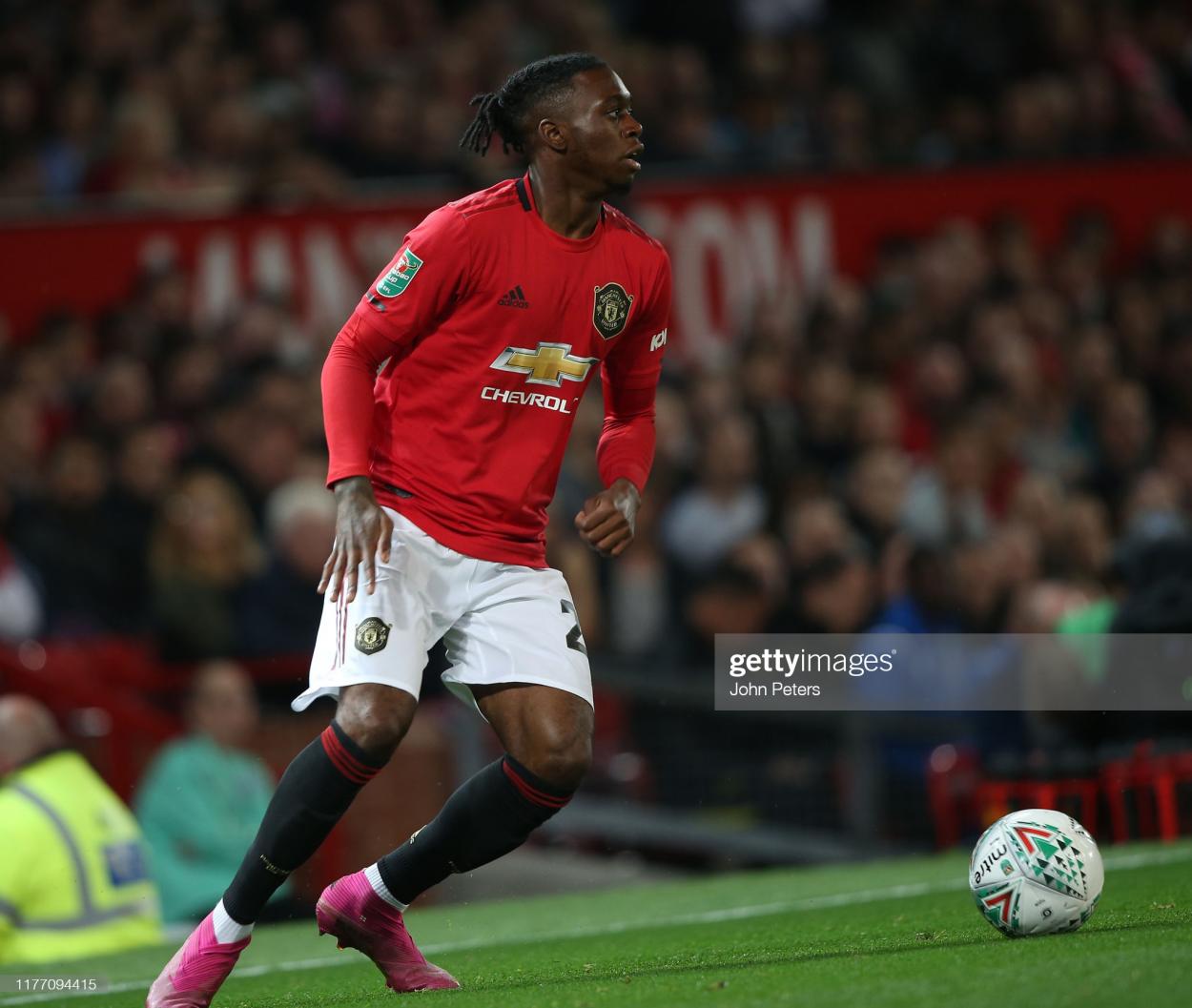“Today I will do what other's won't, so tomorrow I will do what others can't."
The above quote, from former NFL player Jerry Rice, is discussing the importance of working harder than everybody else in order to achieve the most; a challenge to the status quo. Adhering to what you know can be easy but it will only get you so far. It is those that work for the future, and act before they are told, that rise the tallest.
Footballers are subject to the evolving puppeteers. Many managers and coaches are desperately trying to be visionaries, thinking ahead of their rivals in order to gain that competitive advantage on the field of play. Players are on conveyer belts and simply have to adapt to these changes in the best possible way. For many stars, progressive changes will allow individuals technical qualities to shine through to an even greater extent, particularly in attacking areas.
This piece will assess the evolution of the forward with an analysis of how the 'false-nine' position is morphing into a more mainstream type of striker. There is also a focus on whether starting as a wide-player is beneficial to a player’s chances of scoring goals and why inverted wingers have also taken over from crossing expert wide-men.
Recent Past
A striker was ordinarily expected to be a point-of-reference for their team. They were tasked with making defenders feel their presence and scoring the bulk of the goals. Didier Drogba, Ronaldo Nazario, Ruud van Nistelrooy and Robin van Persie spring to mind. These were players who stayed in the final third and looked to be the centre of their team.
In 2012, Sir Alex Ferguson raided Arsenal for van Persie and the Dutchman was the key for Manchester United. Ferguson knew that he needed more firepower to topple rivals Manchester City and van Persie was a man who could guarantee over 20 league goals.
The legendary Scottish manager traditionally built fast, attacking teams that wanted to get the ball wide and fire crosses into its attackers. Wayne Rooney was United’s second highest goalscorer in the 2012-13 season, with 12 Premier League goals, and Javier Hernandez,, in third, had 10.
Rooney usually operated as a ‘ten’ while Hernandez was more of an impact substitute. All three players would have been classed as forwards and there returns were symptomatic of United's attack. Ferguson wanted goals from his forwards in central areas, even if van Persie was the front and centre of their attack.
From David Beckham and Ryan Giggs to Antonio Valencia and Ashley Young, Ferguson always wanted wingers that could cross a ball well. They were the providers. His strikers needed to finish those crosses. It wasn’t tactically bamboozling; quite the opposite.
Wingers created chances. Midfielders addressed the tempo of a game. Strikers scored goals. Defenders defended. Such progressive changes towards systemised football has changed these fixed positions and, as a result, we have come about the near-death of a renowned attacking position.
Declan Houten, in words for 90min.com, believes that the new evolved “second-striker” became more important after the death of the number-ten. He stated that the number-ten role was "asking that players stick to detailed positional instructions rather than floating around the pitch with limited defensive duties."
It isn’t extinct, of course, with Bruno Fernandes and Thomas Muller providing legitimate cases for its existence. But football is evolving towards collective efforts as opposed to reliance on individual flashes of brilliance.
Equally, Omar Saleem discussed the number-ten being a waste of a player when the team is out of possession. In the modern game, “there’s no time or space to carry passengers," he argued on These Football Times. It’s a combination of tactical rigidity and the importance of systems that have tried hard to invalidate this position.

Goals from wide
Roberto Firmino had a unique skill set that was tough to fit into the system of Jurgen Klopp so he helped modify the system. He was probably best suited to a number-ten position but, as already discussed, such a position is becoming marginalised in modern football.
The 29-year-old was an attacking-midfielder for Hoffenheim. When he arrived at Liverpool, Firmino struggled to adapt to life in England. Brendan Rodgers utilised him on at right-midfield and he just didn’t seem comfortable.
Firmino makes selfless movements that are designed to benefit Mohammed Salah and Sadio Mane. He moves deep into spaces, enticing central defenders out of their position, creating more room in behind. The role requires a lot of footballing intelligence. Many people joke about the defensive-striker that Firmino is described as he completely understands how to make Liverpool’s system work.
Salah and Mane are Liverpool’s most likely goalscorers and they are prime benefactors of Firmino's transition.
Another mainstream example of the false-nine during the previous decade was Karim Benzema. The Frenchman was the shadowed figure in Real Madrid’s famous 'BBC' trio featuring Cristiano Ronaldo and Gareth Bale. But Benzema thrived in that role.
Sushruta Nandy stated for EDF that the Frenchman would move out wide from his central position, creating central spaces, with Ronaldo designed to be the goal-getter in that setup, using the left-wing position as a decoy to get into premium central positions. Bale was more of a secondary threat from the other side but the punters lauded the two wide players as world-class difference makers.
In their 2013-14 Champions League clash, the third goal in Madrid's 4-0 annihilation of Bayern Munich at the Allianz Arena was symptomatic of the duo’s devastating potential. A nightmare day for the then Bayern manager, Pep Guardiola!
It’s worth remembering that the false-nine is not simply somebody who sits in the back seat and makes beneficial off-the-ball movements; Guardiola played Lionel Messi in that position for Barcelona. It gave Messi the freedom to create for the likes of David Villa and Pedro Rodriguez but it didn’t negate his ability to score goals for himself.
The Argentine scored 43 times and made 22 goals in the 2010-11 season, as noted by FBref. Villa scored 22 goals and Pedro bagged 18. The deeper position gave Messi the ability to dictate play in the final-third, allowing him to score, assist and create pre-assists. The false-nine comes numerous forms but the common denominator is that the striker is no longer the furthest forward position in a team that is on the attack. In many instances, the starting wide players can reap the benefit.
Villa was ordinarily a striker for Valencia before making his move to Camp Nou. Messi was Barcelona’s greatest finisher but he was also their best creator. Villa was a top goalscorer and that meant if the former Spain international was taking up good attacking positions, it wouldn’t be a problem. He was also quick and technically very good. That means his attributes were effective when coming in from a wide starting position and his finishing efficiency also ensured that Messi could harbour deeper positions. A good modern-day comparison to the false-nine Messi at Barcelona would be Harry Kane at Tottenham Hotspur under Jose Mourinho.
The Spurs striker now occupies deeper positions on the field and such positioning causes a dilemma to opposing defenders. A player of Kane’s stature cannot be allowed to receive the ball, turn and prepare a shot on goal. At the same time, if a defender comes towards Kane, he has the presence of mind to play a pass in behind the defence for Son Heung-min or another advanced winger. 4-3-3 becomes 4-3-1-2 or 2-3-1-4 as Matt Doherty and Sergio Regulion also like to bomb forward.
Kane is still a genuine goal-threat from almost any distance on the pitch. The deeper positions allow him to showcase his complete skill set more effectively. Goalscorer, goal-creator and dictator of play. Of course, this only works because Son has a high level of efficiency in-front of goal. He finishes like a striker and so Kane’s own finishing attributes aren’t being lost as he drops deep. The South Korean is a predator in the box and this tactical shift allows him to get more goals.
Mourinho is a stickler for a more defensive-minded game and this tactical switch owes a lot to Son’s outstanding finishing. If it wasn’t for that, it’s hard to imagine the Portuguese manager asking his star-man to drop into deeper positions. But such a tweak is a conformation to the inverted-winger progression into a pseudo striker.
Wingers in the mould of Beckham are now rather rare. In most instances, a left-footer plays on the right and a right-footer plays on the right as teams seek width from full-back positions. Having an attacking full-back and a winger who isn't inverted makes little sense; you have two players running down the same alleyway.
At present day Man United, Aaron Wan-Bissaka is a defence-first right-back and, in turn, a throwback. Beckham would still have a legitimate role at right-midfield. The pursuit of Jadon Sancho was also with a view to playing the Borussia Dortmund man at right-midfield; Sancho is right-footed.

However, the emphasis on a modern day full-back is to provide width and stretch an opponent; the focus is much more on offensive contribution than it is on defensive nous. Consequently, if the full-back provides the width then that creates openings for the winger to shift inside. Such a move is of obvious benefit to the winger as they are navigating from their starting position.
A wide player is very difficult to mark so it is arguably more beneficial for a goalscorer to start on the flanks. When they make angled runs inside, who is supposed to take responsibility from the opposing team? Is it the full-back or the centre-back?
Such a shift in mindset is perhaps why zonal marking is now a preferred defensive system from corner kicks; football is continually shifting towards fluid systems that change in and out of possession. The wide-position is really a facade in some setups. It is merely a place-holder for when the team is out of possession; positions are fluid, not fixed.
The wide-striker
Mikel Arteta has changed a lot in his short tenure at Arsenal. In attack, the Spaniard has made one big positional decision regarding the club’s key forward, Pierre-Emerick Aubameyang.
The Gabonese superstar is Arsenal’s best player and Arteta knows that; he spent the best part of 2020 convincing Aubameyang to stay at the Emirates. Ideally, Arteta would have more of a creator in the centre, or more creativity from deep, to fully make use of Aubameyang's inside runs. But the point is that Arteta sees Aubameyang benefiting more by starting out at left-wing, despite predominantly being a centre-forward. However, such a tactical adjustment seems to be more of a luxury for the so-called bigger teams.
A striker playing out wide would ordinarily only be suitable in a formation such as 4-3-3 of 3-4-3. This means that the three attacking players are still situated very high up the pitch. Liverpool, for example, can set up like this and still have Trent Alexander-Arnold and Andy Robertson bombing forward like wingers. To utilise your main goal-threats in these wider positions requires a certain level of privilege. Such measures are not used as greatly by smaller teams in the Premier League.
If the full-backs do not push forward and perform like wingers then wingers cannot cut inside as effectively. Opposing full-backs can track their runs because they know there is no consequence to it. That overlapping option is designed to create an overload and a panic within the opposition. Norwich City recently tried to play in such a way but they were relegated due to a lack of efficiency with such an attacking system. Their bravery was naivety.
Utilising athletic forwards as wide-players or moulding clinical winder-forwards into auxiliary strikers often requires a high-risk for it to be effective. To teams that simply want to beat the drop in the Premier League, there is too much risk in progressive evolution and so they want their best goalscorers starting in the centre of the field.
Normality
Callum Wilson, Chris Wood and Aleksandr Mitrovic are examples of the more traditional centre-forwards. The likes of Newcastle United, Burnley and Fulham rely heavily on their frontmen to make their presences felt. Maintaining a solid defensive structure and finding a striker that can get a double figure return is going to make a huge difference to their survival bid. They endorse target-men and focal points. It’s worth noting, however, that many bigger teams would avoid players with less of a technical skill set because they would not fit into progressive system-based football as seamlessly.
The risk and reward carrot is far more appetising when you have more money to spend or the expectations are significantly greater. When a team is expected to win most weeks, they have to be progressive with their thinking because the skill gap is not as wide as it once was, especially with the pandemic further levelling out the playing field. There is also the point in playing a different tactical setup to counter that of the bigger teams.
If a team with less resources takes on a team of superstars, it wouldn’t make sense to play an all-out-attack approach. Such a setup would inevitably lead to a defeat because both teams would be hitting each other pound for pound and the heavyweight would come out on top. Employing a deep-block will require a striker to hold up the ball and make the best out of little. You wouldn’t want your striker in a wide position, you would want them as central as possible in order to take advantage of any openings that are created.
However, the success of the traditional forward has been vindicated in the Premier League in this current campaign.
Goal-getters
Dominic Calvert-Lewin and Jamie Vardy have been strong exponents of the traditional striker in the Premier League; both Englishmen have eight league goals this season and top the goal-scoring charts. Everton and Leicester City look towards their respective forwards as their main scorer of goals.
Calvert-Lewin is a throwback. He is big, strong and good in the air, smelling goals in and around the 18-yard box. Vardy is blisteringly quick and is also the very definition of a fox-in-the-box, sharing that intuition for finishing in the area.
There is never a one-size-fits-all policy in football. When it evolves, there will still be people who prefer to stick with what they know. After all, when enough people conform to the progressive ideals of fluid football, those who refrain from doing so can then become the savvy tacticians over time.
Antonio Conte has always been a big admirer of the strapping centre-forward, calling it a “point of reference” for his style of football. A striker in Conte’s team will work hard to hold the ball up before bringing his team-mates into the game. He will then run into the box in an attempt to finish off the move.
The Italian is a huge admirer of Romelu Lukaku, arguably the world’s best target-man, and he is integral to the Inter Milan setup. The team is set up to feed the big Belgian with direct balls and crosses into the box. Much of the creativity comes from the wing-back players, particularly the immensely talented Achraf Hakimi, and his teams endorse classic wide play.
One of Conte’s biggest criticisms is that his style, while defensively robust, is predictable in a modern game that frowns upon rigidity. However, Conte will point to the fact that he achieved Inter’s best Serie A finish since 2010-11 (2nd) whilst taking the club to the Europa League final. Before that, he won the Premier League title with Chelsea in the 2016-17 campaign, reigning supreme over Guardiola, Klopp and Mourinho.
The 3-5-2 formation is often quite positionally fixed and managers like it for its structural solidity. Strikers in that system are traditional strikers. Defence and attacks are largely controlled by the wing-backs. It’s a setup that protects the value of the striker being the furthest player forward in the centre of the pitch.
The positional progression of the striker is a luxury that not all teams can afford but such progression isn't mandatory and there are still enough believers in the old-fashioned centre-forward to stop the position going out of fashion.
As is the case within football, no tactical adjustment is universal and nor should it be. The persecution of managers who prefer a direct type of play is ludicrous; nobody wants football communism. If everyone played in the same way then tactical battles would not exist and football’s unpredictable nature would slowly evaporate.
Evolution should always be credited but we shouldn’t make martyrs of the dissenters.









































